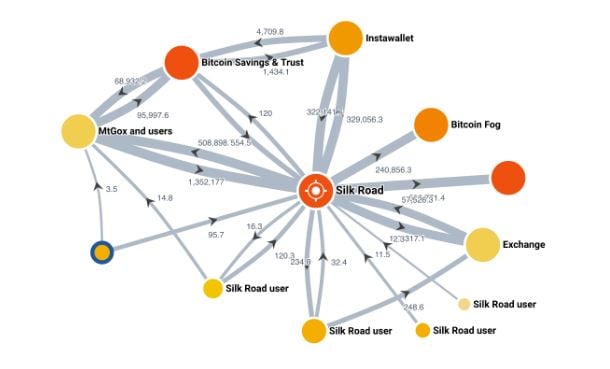Artificial intelligence in forensics refers to the use of machine learning algorithms and automated systems to analyze evidence, identify patterns, and solve crimes. Modern criminal investigations generate massive amounts of digital data from surveillance cameras, mobile devices, financial records, and social media platforms. Traditional forensic methods struggle to process these enormous datasets with the speed and accuracy required by today’s criminal justice system.
AI technologies transform how investigators examine evidence by automating time-intensive tasks and detecting patterns that human analysts might miss. Machine learning systems can process thousands of hours of video footage, analyze complex DNA mixtures, and trace cryptocurrency transactions across multiple blockchain networks. These capabilities enable forensic teams to solve cases faster while uncovering connections between seemingly unrelated pieces of evidence.
The integration of AI into forensic science represents one of the most significant technological advances since DNA testing became widely available. Law enforcement agencies worldwide now rely on AI-powered tools for everything from facial recognition and fingerprint analysis to detecting deepfake videos and synthetic media. However, the adoption of these technologies also raises important questions about accuracy, bias, and responsible AI implementation.

Source: Forensic Science International: Genetics
What Is AI in Forensics
AI in forensics uses computer algorithms to examine evidence and assist criminal investigations automatically. These systems handle large amounts of information from crime scenes, digital devices, and surveillance footage to help investigators solve cases more efficiently.
Forensic AI combines three main technologies that work together. Machine learning algorithms identify patterns in data that humans might miss. Computer vision systems analyze images and videos to detect important details. Natural language processing examines text messages, emails, and documents for relevant information.
Machine learning excels at processing massive datasets that would take human investigators months to review manually. These algorithms can analyze DNA samples, compare fingerprints against databases, and identify suspicious financial transactions across thousands of records. Columbia University researchers discovered that machine learning can determine whether fingerprints from different fingers belong to the same person with 77 percent accuracy.
Digital Evidence Analysis and Processing
Digital forensics has transformed with AI integration. Criminal investigations now generate terabytes of data from surveillance footage, mobile devices, financial transactions, and network communications. Traditional methods can’t process these enormous datasets quickly enough for modern law enforcement needs.
AI-powered systems handle tasks that previously required weeks or months of manual analysis. These technologies process terabytes of data from multiple sources simultaneously, identifying patterns and connections that human investigators might miss. Machine learning algorithms reduce processing time for essential forensic tasks by up to 93 percent while improving accuracy through advanced pattern recognition.
Pattern recognition algorithms identify suspicious patterns within digital evidence that would be difficult for human analysts to detect manually. These systems analyze vast amounts of data to recognize behavioral anomalies, communication patterns, and transaction sequences that indicate criminal activity.
Biometric Identification Systems

Source: ResearchGate
Facial recognition technology uses AI agent perception to analyze facial features with remarkable accuracy, enabling identification even under challenging conditions like poor lighting or partial obstruction. These systems process surveillance footage from multiple sources and track individuals across different locations and time periods.

Source: Forensic
Recent research revealed that fingerprints from different fingers of the same person share detectable similarities. AI systems achieved 77 percent accuracy in determining whether fingerprints belonged to the same individual by analyzing ridge patterns near fingerprint centers. This discovery enables investigators to link evidence from different crime scenes even when prints come from different fingers of the same suspect.
Multi-modal biometric systems combine facial recognition, fingerprint analysis, and iris scanning to create comprehensive identification profiles. These integrated approaches reduce false positive rates while improving overall accuracy.
Laboratory Applications and Enhancement
DNA analysis benefits significantly from AI systems that interpret complex samples containing mixed or degraded genetic material. Machine learning algorithms process DNA mixtures involving multiple contributors and predict genetic profiles from partial samples. The National Institute of Justice reports that AI can accelerate DNA analysis through automated processes and assistance with complex kinship determinations.
Image and video enhancement technologies reveal details not visible to human analysts through:
- Noise reduction — removing unwanted visual interference
- Resolution improvement — increasing image clarity and detail
- Contrast optimization — enhancing visibility of important features
Audio authentication systems verify recording authenticity and detect manipulation in an era of sophisticated deepfake audio technology. Machine learning algorithms identify subtle anomalies indicating tampering and analyze speech patterns to detect AI-generated synthetic audio.
Emerging Technologies in Forensic Science

Source: Elliptic
Blockchain forensics represents an entirely new category of financial crime investigation. Advanced platforms enable investigators to trace transactions across more than 45 blockchain networks and over 200 million digital assets. These systems automatically detect suspicious behavioral patterns and visualize complex transaction networks for legal proceedings.

Source: ResearchGate
Deepfake detection systems address challenges posed by AI-generated synthetic media in criminal investigations. The National Institute of Standards prioritizes evaluation of detection systems against AI-generated content to maintain evidence integrity. Contemporary detection methods analyze temporal consistency, facial landmarks, and physiological patterns to identify synthetic content.
Predictive forensics systems analyze historical crime data and behavioral patterns to identify areas with elevated risk for criminal activity. Real-time monitoring systems continuously analyze data streams from surveillance cameras, financial networks, and digital communications to detect suspicious activities as they occur.
Implementation Challenges and Considerations

Source: Expert Allies
Algorithmic bias remains a significant concern in AI forensic systems. Research shows that risk assessment tools exhibit racial and gender bias in criminal justice applications. Training datasets often reflect historical prejudices, creating AI systems that perpetuate discriminatory patterns rather than providing objective analysis.
Privacy and civil rights protection become complex issues as AI capabilities enable more pervasive monitoring of citizen activities. Surveillance systems raise questions about balancing security with individual freedoms, particularly as facial recognition and predictive analytics create comprehensive tracking networks.
Legal frameworks struggle to keep pace with rapid AI advancement in forensic science. Traditional evidence admissibility standards, established before AI analysis, address complexities of algorithmic decision-making and machine learning systems. Courts grapple with questions about reliability, validity, and interpretability of AI-generated evidence while ensuring constitutional protections.
The black box AI problem poses significant challenges for legal proceedings. Many AI systems, particularly deep learning models, operate in ways that researchers can’t fully explain. Courts require expert witnesses to explain how evidence was generated and analyzed, but current AI systems often can’t provide clear explanations for their conclusions.
FAQ

Source: Cyber Security News
How accurate are AI systems in fingerprint analysis compared to human experts?
AI systems achieve 77 percent accuracy in determining whether fingerprints from different fingers belong to the same person, according to Columbia University research. Traditional human analysis focuses on minutiae features like branchings and endpoints, while AI systems analyze ridge orientation patterns near fingerprint centers. This AI capability enables investigators to link evidence from different crime scenes even when prints come from different fingers of the same suspect.
What types of digital evidence can AI process automatically?
AI systems automatically process surveillance footage, mobile device data, financial transaction records, social media communications, and email archives. Computer vision technologies enhance surveillance footage by improving image quality and automatically detecting suspicious activities. Natural language processing extracts critical information from emails, text messages, and social media posts while identifying relevant communications within massive datasets.
How do forensic investigators detect deepfake videos and synthetic media?
Deepfake detection systems employ multiple analytical approaches including temporal consistency analysis, facial landmark tracking, and physiological impossibility detection. These systems examine how facial features change across video frames, monitor movement of specific facial points, and identify unnatural breathing patterns or micro-expressions that AI generation systems struggle to replicate convincingly. Advanced algorithms also analyze compression inconsistencies and lighting anomalies that indicate digital manipulation.
What legal challenges do AI-generated forensic results face in court?
AI-generated evidence faces traditional admissibility standards like the Daubert criteria, which assess scientific reliability, peer review, error rates, and general acceptance. The main challenge involves the “black box” problem where AI systems can’t provide clear explanations for their conclusions. Expert witnesses explain AI methodologies and result interpretation, while defense attorneys can challenge algorithm accuracy, training data quality, or operator competency.
How long does it typically take to implement AI systems in forensic laboratories?
Implementation timelines range from 2-6 weeks for simple AI tools like automated image enhancement to 6-18 months for comprehensive enterprise systems. Mid-level deployments incorporating multiple AI applications across different forensic disciplines usually require 3-6 months for complete integration. Organizations often deploy AI tools in phases, starting with less critical applications before expanding to core forensic processes while maintaining parallel traditional workflows during transition periods. For organizations considering AI implementation, proper planning and infrastructure development are essential for successful deployment.

